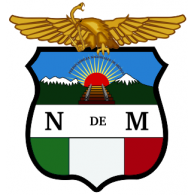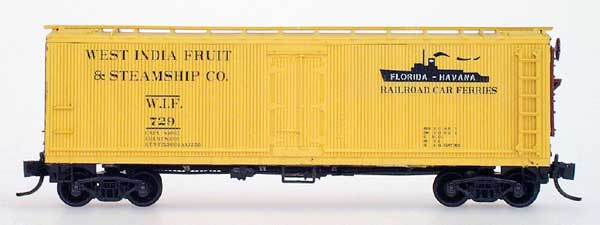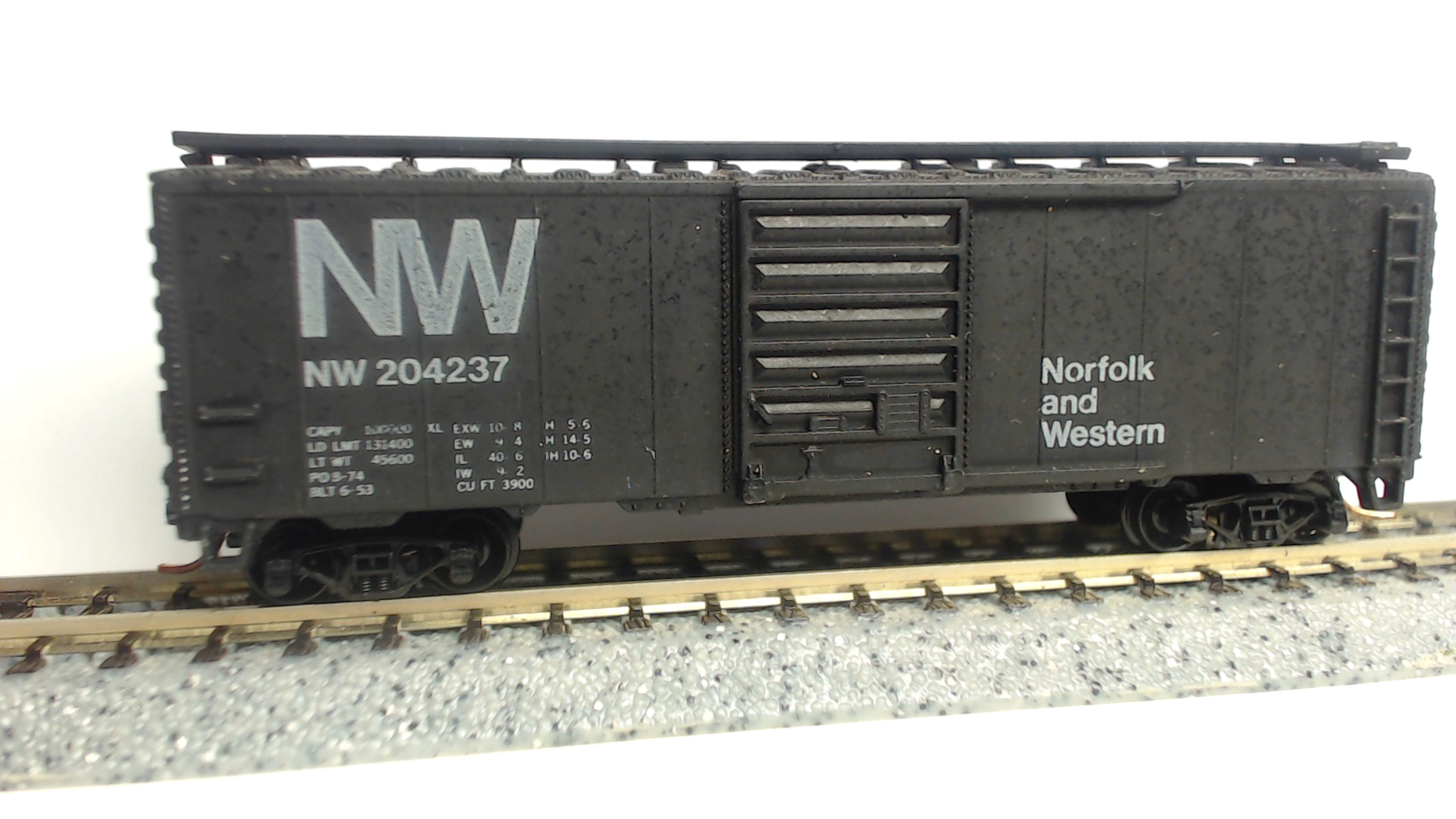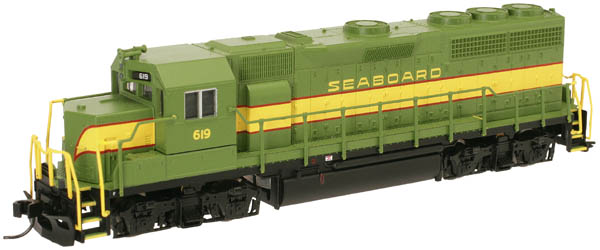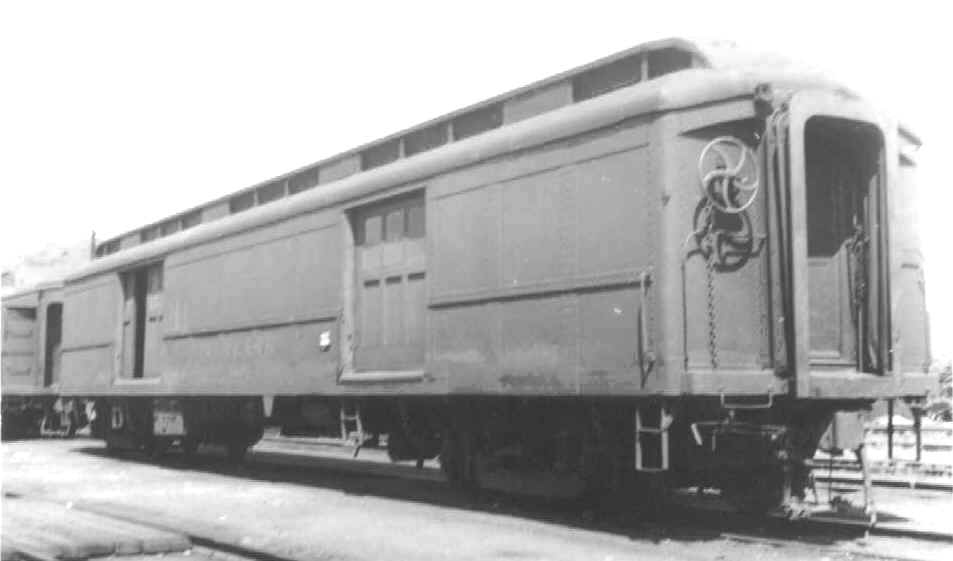Micro-Trains - 147 51 370 - Passenger Car, Heavyweight, Baggage - Ferrocarriles Nacionales de México - 2267
| Stock Number | 147 51 370 |
| Secondary Stock Number | 14751370 |
| Brand | Micro-Trains |
| Manufacturer | Micro-Trains Line |
| Body Style | Micro-Trains 147 Heavyweight Baggage Car |
| Prototype Vehicle | Passenger Car, Heavyweight, Baggage (Details) |
| Road or Company Name | Ferrocarriles Nacionales de México (Details) |
| Road or Reporting Number | 2267 |
| Paint Color(s) | Green with Red Stripe & Black Roof |
| Print Color(s) | Gold |
| Coupler Type | MT Magne-Matic Knuckle |
| Coupler Mount | Truck-Mount |
| Wheel Type | Injection Molded Plastic |
| Wheel Profile | Standard |
| Multipack | Yes |
| Multipack Count | 5 |
| Multipack ID Number | 993 01 990 |
| Multipack Element | 1 |
| Announcement Date | 2019-11-01 |
| Release Date | 2020-03-01 |
| Item Category | Passenger Cars |
| Model Type | Heavyweight |
| Model Subtype | Pullman |
| Model Variety | Baggage |
| Prototype Region | North America |
| Prototype Era | NA Era II: Late Steam (1901 - 1938) |
| Scale | 1/160 |
Specific Item Information:
N de M Heavyweight 5-pack:
12-1 Sleeper, Observation, Paired-Window Coach, Single-Window Coach, Baggage.
Road Numbers: 2267, Primera #465, Segunda #4891, Ozuluama #222, Huamantla
Model Information:
The prototype for this model was built in 1924 by Pullman Standard (PS). As typical for heavyweight cars of this era, riding on two 3-axle trucks, these cars are of riveted steel construction.
Prototype History:
Heavyweight Passenger Cars were the prevalent style of railcars used for passenger service during the interwar period. They were constructed of concrete, wood and steel. The floor was often of poured concrete, which helped give these cars a smoother ride than older wooden-body cars. Also, because of their heavy construction, they were also much less likely to "telescope" when a collision occurred. They were much heavier than modern passenger cars due to the materials used in their construction. They were so heavy that they often (but not always) required three-axle bogies to support them.
Heavyweights frequently had what is called a clerestory roof. The center of the roof was higher than the sides, in that it was stepped up. The lightweight cars had smooth, rounded roofs. Heavyweight passenger cars typically weigh around 1 ton per foot of length. So a 85' car weighs in the area of 85 tons for a heavyweight car.
Heavyweights frequently had what is called a clerestory roof. The center of the roof was higher than the sides, in that it was stepped up. The lightweight cars had smooth, rounded roofs. Heavyweight passenger cars typically weigh around 1 ton per foot of length. So a 85' car weighs in the area of 85 tons for a heavyweight car.
Road Name History:
Ferrocarriles Nacionales de México, (known as N de M originally, and FNM from 1987 to present) was Mexico's state owned railroad company from 1938 to 1998, and prior to 1938 (dating from the regime of Porfirio Diaz) a major railroad controlled by the government that linked Mexico City to the major cities of Nuevo Laredo and Ciudad Juarez on the U.S. border. The first trains to Nuevo Laredo from Mexico City began operating in 1903.
N de M absorbed the Mexican Central Railroad (Ferrocarril Central Mexicano, first section from Mexico City to Leon, Guanajuato, opened in 1882) in 1909, thus acquiring a second border gateway at Ciudad Juarez (adjacent to El Paso, Texas). The N de M was nationalized by President Lazaro Cardenas del Rio in 1938, and privatized 60 years later by President Ernesto Zedillo. N de M operated most railway trackage through the central and northeastern regions of the republic.
In 1995, the Mexican government announced that the FNM would be privatized and divided into four main systems. As part of the restructuring for privatization, FNM suspended passenger rail service in 1997, and the new arrangements applied from 1998. The companies were Kansas City Southern de Mexico, Ferromex, Ferrosur, and (owned jointly by the three companies) Ferrocarril y Terminal del Valle de Mexico or Ferrovalle which operates railroads and terminals in and around Mexico City.
As of 2006, the remaining parts of NdeM are in the process of liquidation.
N de M absorbed the Mexican Central Railroad (Ferrocarril Central Mexicano, first section from Mexico City to Leon, Guanajuato, opened in 1882) in 1909, thus acquiring a second border gateway at Ciudad Juarez (adjacent to El Paso, Texas). The N de M was nationalized by President Lazaro Cardenas del Rio in 1938, and privatized 60 years later by President Ernesto Zedillo. N de M operated most railway trackage through the central and northeastern regions of the republic.
In 1995, the Mexican government announced that the FNM would be privatized and divided into four main systems. As part of the restructuring for privatization, FNM suspended passenger rail service in 1997, and the new arrangements applied from 1998. The companies were Kansas City Southern de Mexico, Ferromex, Ferrosur, and (owned jointly by the three companies) Ferrocarril y Terminal del Valle de Mexico or Ferrovalle which operates railroads and terminals in and around Mexico City.
As of 2006, the remaining parts of NdeM are in the process of liquidation.
Brand/Importer Information:
Micro-Trains is the brand name used by both Kadee Quality Products and Micro-Trains Line. For a history of the relationship between the brand and the two companies, please consult our Micro-Trains Collector's Guide.
Manufacturer Information:
 Micro-Trains Line split off from Kadee Quality Products in 1990. Kadee Quality Products originally got involved in N-Scale by producing a scaled-down version of their successful HO Magne-Matic knuckle coupler system. This coupler was superior to the ubiquitous 'Rapido' style coupler due to two primary factors: superior realistic appearance and the ability to automatically uncouple when stopped over a magnet embedded in a section of track. The success of these couplers in N-Scale quickly translated to the production of trucks, wheels and in 1972 a release of ready-to-run box cars.
Micro-Trains Line split off from Kadee Quality Products in 1990. Kadee Quality Products originally got involved in N-Scale by producing a scaled-down version of their successful HO Magne-Matic knuckle coupler system. This coupler was superior to the ubiquitous 'Rapido' style coupler due to two primary factors: superior realistic appearance and the ability to automatically uncouple when stopped over a magnet embedded in a section of track. The success of these couplers in N-Scale quickly translated to the production of trucks, wheels and in 1972 a release of ready-to-run box cars.
Micro-Trains Line Co. split off from Kadee in 1990 to form a completely independent company. For this reason, products from this company can appear with labels from both enterprises. Due to the nature of production idiosyncrasies and various random factors, the rolling stock from Micro-Trains can have all sorts of interesting variations in both their packaging as well as the products themselves. When acquiring an MTL product it is very important to understand these important production variations that can greatly enhance (or decrease) the value of your purchase.
Please consult our Micro-Trains Collector's Guide

Micro-Trains Line Co. split off from Kadee in 1990 to form a completely independent company. For this reason, products from this company can appear with labels from both enterprises. Due to the nature of production idiosyncrasies and various random factors, the rolling stock from Micro-Trains can have all sorts of interesting variations in both their packaging as well as the products themselves. When acquiring an MTL product it is very important to understand these important production variations that can greatly enhance (or decrease) the value of your purchase.
Please consult our Micro-Trains Collector's Guide
Item created by: CNW400
on 2022-02-25 11:02:43
Last edited by: George on 2024-01-26 20:29:16
If you see errors or missing data in this entry, please feel free to log in and edit it. Anyone with a Gmail account can log in instantly.
Last edited by: George on 2024-01-26 20:29:16
If you see errors or missing data in this entry, please feel free to log in and edit it. Anyone with a Gmail account can log in instantly.



